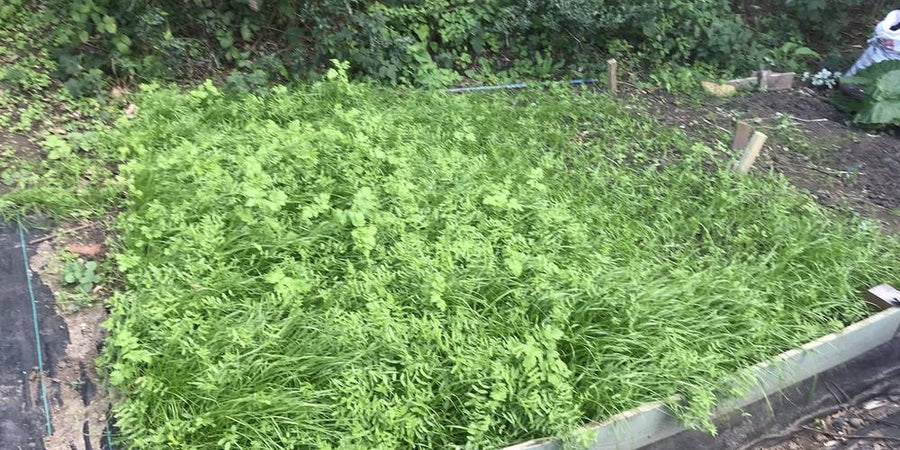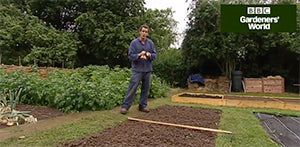The 4 steps of digging in your green manure:
- Green manure should be cut down before flowering when the stems are soft and ‘green’
- Dig the green manure into the top 15cm of soil
- Or alternatively, the green manure can be left on top of the soil as a mulch and let the worms drag down the organic matter
- Wait 30 days before sowing the next crop
Or the more detailed version...
Chop up top growth (foliage) into smaller pieces, use the edge of a spade but you can also use shears especially if the foliage is too coarse or long. Turnover and dig in foliage and green manure roots with a spade into the soil to a depth of 15cm. Do small areas at a time. Gently tamp down the soil with the back of a rake and then rake the soil to a fine tilth.
Foliage can be removed or composted if it is too coarse or too hard to dig in or if you just prefer to. Then either dig in roots by turning over in a small section or if you wish to leave in situ and plant seedlings through roots. This last method is only suitable for annual types that die off once very closely topped, perennial green manures like clovers will continue to grow.
Leave 4 weeks before sowing seed especially with green manures like Forage Rye and Winter Tares as they have a chemical that once released inhibits the germination of small seeds – great against weed seed germination but not so for veg seeds. However small plants/seedlings are not affected and can be transplanted within a couple of weeks.
It is best to dig in or top green manures before they start flowering and especially before they go to seed. The stems become woody and they are harder to break down in the soil. However you may wish to allow a few to flower especially the Clovers or Phacelia as their flowers are havens for bees & beneficial insects – they will just need careful management to ensure they do not go to seed unless you wish them to.
And for those who follow a 'No dig' approach...same method involved in cutting down the green manure, but instead of digging in just leave the cuttings on the surface and it will act as a mulch, or hoe in. Otherwise, the cuttings can be removed and simply composted.
After all that hard work you can now be confident that you and your soil will reap many benefits from incorporating green manure into your crop rotation plans.








